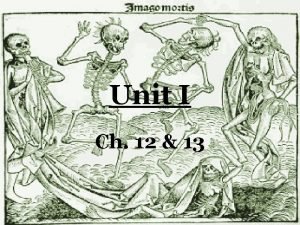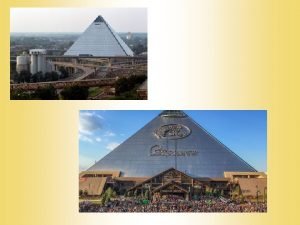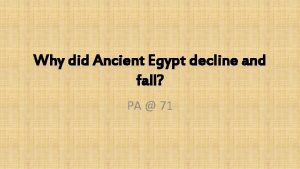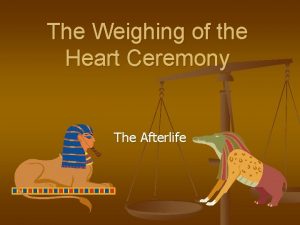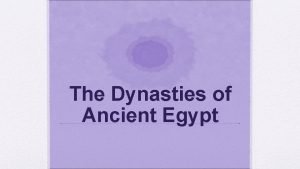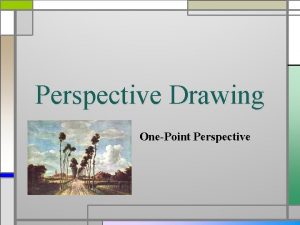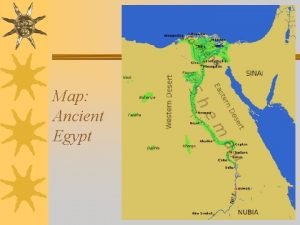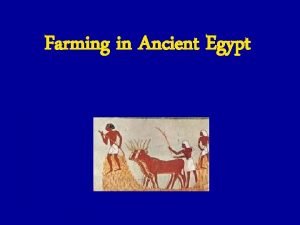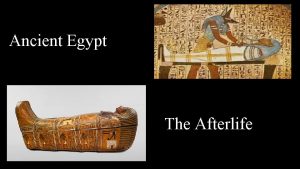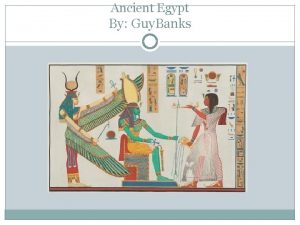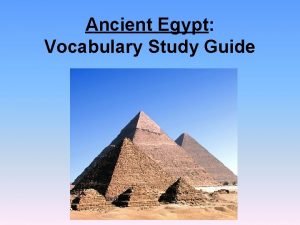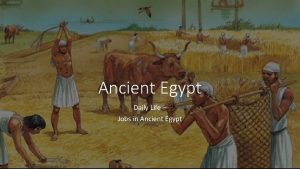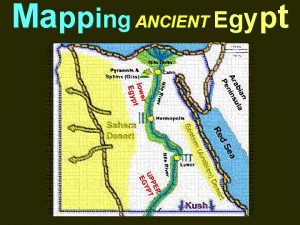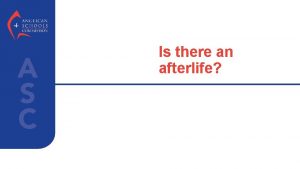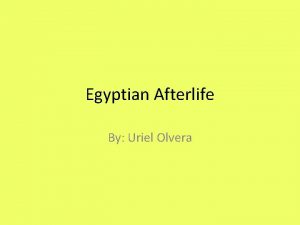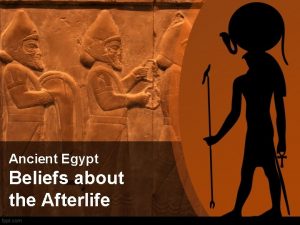Ancient Egypt Afterlife 1152022 1 Evaluated your life














- Slides: 14

Ancient Egypt Afterlife 1/15/2022 1

• Evaluated your life and death • Egyptians saw death as a new beginning • Belief in the afterlife evolved from being available only to the pharaohs to being attainable for all • Social status had no impact in the afterlife. Social status did affect how your body was prepared and what was stored in your tomb 1/15/2022 Ma’at 2

Principles • Egyptians believed in 1. Preserving bodies in lifelike forms 2. The idea that the deceased needed to transport certain possessions to the afterlife 1/15/2022 3

Prized Possessions • Placed in the tomb to – make Ka more comfortable – Assist in the journey to the afterlife 1/15/2022 http: //www. civilisations. ca/cmc/exhibitions/civil/egypt/egcr 05 e. 4

Book of the Dead • A collection of spells, charms, passwords, numbers and magical formulas that was read so the deceased could make the transition to the afterlife • Always showed these elements – – – Panel of judges (14) The key of life, Ankh Ma’at weighing the heart Scale of judgement Record of the outcome 1/15/2022 5

Book of the Dead • shows Hunefer's heart being weighed on the scale of Maat against the feather of truth, by the jackal-headed Anubis • Ibis-headed Thoth, scribe of the gods, records the result • If his heart is lighter than the feather, Hunefer is allowed to pass into the afterlife. If not, he is eaten by the waiting chimeric devouring creature Ammut composed of the deadly crocodile, lion, and hippopotamus 1/15/2022 6

Book of the Dead • Hunefer is led by Anubis to the judgement hall. In the panel after the weighing, the triumphant Hunefer, having passed the test, is presented by Horus to the shrine of the green-skinned Osiris, god of the underworld and the dead, accompanied by Isis and Nephthys. The 14 gods of Egypt are shown seated above, in the order of judges 1/15/2022 7

Book of the Dead 1/15/2022 8

Spells • http: //www. wsu. edu/~dee/EGYPT/BOD 12 5. HTM 1/15/2022 9

• focused on belief of the importance of preserving the body • Afterlife would be spent enjoying best of life experiences • Body covered with natron and dried for up to 70 days • Body wrapped in linen coated with resins and oils • During the Middle Kingdom it became customary to place a mask over the face 1/15/2022 Mummification • Removal of organs (lungs, stomach, intestines, liver) • Canopic Jars were closed with stoppers fashioned in the shape of four heads -- human, baboon, falcon, and jackal - representing the four protective spirits called the Four Sons of Horus. • brain was sucked out of the cranial cavity and thrown away because the Egyptian's thought it was useless. 10

Hieroglyphics 1/15/2022 11

• History of Writing: 1) pictograms (sun= sun) 2) ideograms (sun = sun, daylight, warmth, light) 3) phonograms: symbols that suggest a particular sound; related ideas and also sound (Sun = sun, son, Sunday) • Each hieroglyph often symbolized more than one consonant • hieroglyphs were also a combination of sound-signs, pictograms, and ideograms. No wonder it was so hard to decode them! 1/15/2022 12

• During the New Kingdom, there were 700 hieroglyphs in common usage • 100 were strictly visual, while rest were phonograms • Eventually scribes adapted hieroglyphic symbols • By 700 BC, script was refined so that demotic (or popular script) was used for secular matters such as letters, accounts and record keeping 1/15/2022 13

Rosetta Stone What is the Rosetta Stone? • A tablet with writing in two languages (Egyptian and Greek), using three scripts (hieroglyphic, demotic and Greek). It was carved in 196 BC. Why is it in three different scripts? 1. hieroglyphs for religious documents; demotic- common script of Egypt; Greek - language of the rulers of Egypt at that time 2. so priests, government officials and rulers of Egypt could it When was the Rosetta Stone found? • 1799 by French soldiers who were rebuilding a fort in Egypt (in a small village in Delta called Rosetta (Rashid) What does the Rosetta Stone say? • written by a group of priests in Egypt to honour the Egyptian pharaoh, it lists all of the things that the pharaoh had done that were good for the priests and the people of Egypt 1/15/2022 14
 Afterlife in zoroastrianism
Afterlife in zoroastrianism See you in the afterlife
See you in the afterlife The afterlife of anne boleyn
The afterlife of anne boleyn Upper egypt and lower egypt
Upper egypt and lower egypt Why did egypt decline
Why did egypt decline What is ammit the god of
What is ammit the god of Middle ages floral design
Middle ages floral design Egypt vocabulary
Egypt vocabulary Frontalism definition
Frontalism definition British council ancient egypt
British council ancient egypt Specialized jobs in ancient egypt
Specialized jobs in ancient egypt artists use this perspective to show objects face-on.
artists use this perspective to show objects face-on. Outline map of ancient egypt
Outline map of ancient egypt Historical background of management
Historical background of management What crops did egypt grow
What crops did egypt grow


